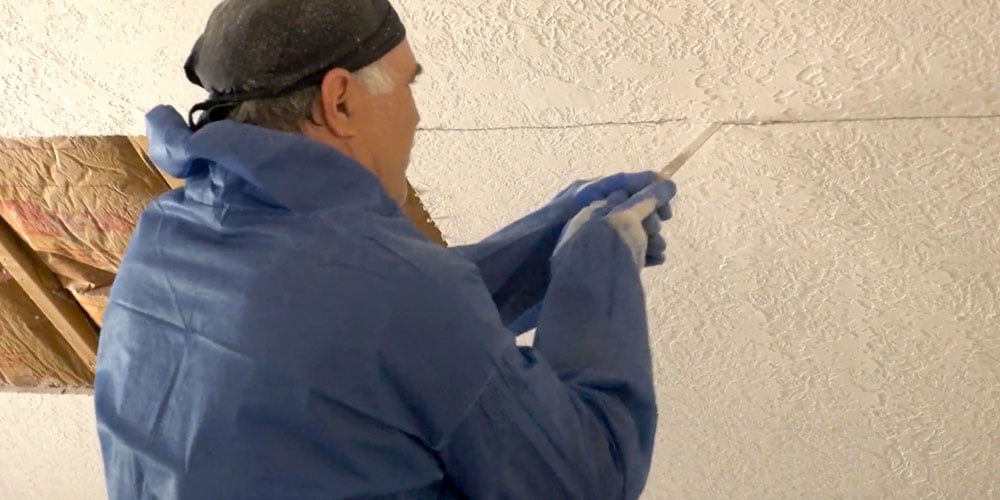How to Insulate a Finished Attic with Foam


If you’re thinking about how to insulate a finished attic, you’re probably imagining a cozy space, perhaps a Cape Cod-style home with slanted ceilings, where every nook and cranny is properly sealed off from the elements.
But how exactly do you get insulation into those tricky areas when there’s already drywall in place?
Let’s walk through the process step by step, discussing how to insulate a finished attic ceiling and walls to create a more energy-efficient and comfortable space.
Understanding the Challenges of a Finished Attic
Insulating an unfinished attic is one thing – no drywall, wide open spaces – but things can get a little more complicated when you have a finished attic.
Whether you’re looking to insulate finished attic walls or tackle how to install insulation in a finished attic ceiling, it’s important to understand what you’re dealing with.
Think of a typical finished attic in a Cape Cod-style home. The upper story likely has cathedral ceilings with slants that go from the floor to the eaves, and the walls are already covered in drywall. You’re not just insulating wide-open cavities anymore. So, what’s the best approach?
Injection Foam vs. Spray Foam: What's the Difference?
When deciding how to insulate a finished attic, you might wonder whether injection or spray foam is the better option.
Technically, you can use both, but each has its own ideal installation to also consider. Let’s jump right in.
- Injection Foam: This method involves injecting foam into small holes drilled into your drywall. It’s important to note here that injection foam is best used for the walls, not the ceiling. It’s a less invasive option, but depending on your specific attic layout, it can have some complications. Make sure to have a detailed conversation with your contractor about whether this fits your project well.
- Spray Foam: More often than not, spray foam insulation is the better recommendation for insulating a finished attic. Spray foam expands to fill every nook and cranny, ensuring your attic is well-sealed and insulated. This creates a superior air seal and can help prevent energy loss, especially in areas with odd angles or hard-to-reach spaces.
How to Insulate a Finished Attic Ceiling
So, how do you install insulation in a finished attic ceiling?
Spray foam insulation is typically the preferred method. But since your attic is finished, you’ll need to cut into the drywall to access the ceiling cavities.
Here’s how the process works.
Cutting Access Points
Somewhere around the middle of your slanted ceiling, or possibly in two locations, depending on the length of the slope, a contractor will cut a strip of drywall to access the ceiling cavity.
If the slope is long, two cuts may be needed to reach the entire space.
Filling the Cavity
After cutting the access points, the contractor will spray foam insulation into the ceiling assembly.
As the foam expands, it fills the cavity, sealing off the attic space from the outside elements, making it part of the conditioned living space.
Trimming and Sealing
Any excess will be trimmed off as the foam expands, and the drywall will be replaced and patched up.
Once complete, you’ll have a fully insulated attic ceiling without major changes to the look of your finished space.
Don't Forget About Knee Walls and Crawl Spaces
Many finished attics, especially in Cape Cod homes, have knee walls – short vertical walls that create small crawl spaces or cubby spaces behind them.
These areas are often overlooked when thinking about how to insulate a finished attic, but they are crucial to ensuring your attic is fully sealed.
To properly insulate behind these knee walls:
- The contractor will cut access into the cubby space or crawl space behind the knee walls.
- Foam insulation will then be sprayed into these areas to make sure they’re properly insulated and air sealed.
Just like with the attic ceiling, this process ensures that no part of your attic is left exposed, keeping your home more energy efficient.
Insulating Your Finished Attic for Comfort and Efficiency
Insulating a finished attic can seem complicated, especially with slanted ceilings, knee walls, and finished drywall.
But with the right approach, you can ensure that every part of your attic is properly insulated, from the ceiling to the walls.
When insulating a finished attic, your main goal is to create an air seal, ensuring there are no gaps where heat can escape in the winter or where it can seep in during the summer. This helps regulate the temperature in your home, lowers your energy bills, and makes that upper level of your home more comfortable year-round.
If you’re ready to tackle how to insulate your finished attic ceiling or walls, finding a spray foam insulation contractor could be just a click away. Visit our Find a Dealer page to connect with a RetroFoam expert in your area who may also offer spray foam insulation.
If you have more questions about foam insulation for your home, check out our Learning Center, where you’ll find a ton of great resources to help you answer them.
Related Articles
Why is My House So Hot Upstairs: A Comprehensive Analysis
How to Prevent Ice Dams on Your Roof
What is the Difference Between RetroFoam Injection Foam and Spray Foam Insulation?
About Eric Garcia
Eric brings his knowledge and training in building science, training in spray and injection foams from the manufacturers, more than eight years installing foam insulation, as well as selling and managing in the foam insulation industry. He is also BPI and Dale Carnegie certified and has taken several building science courses, including air sealing and building envelope. Eric is the Professor of Foam on our educational YouTube series Foam University. Even when Eric is off he is usually still “working” or thinking about work, but when he can get away he enjoys camping, hiking, hunting, and woodworking.


